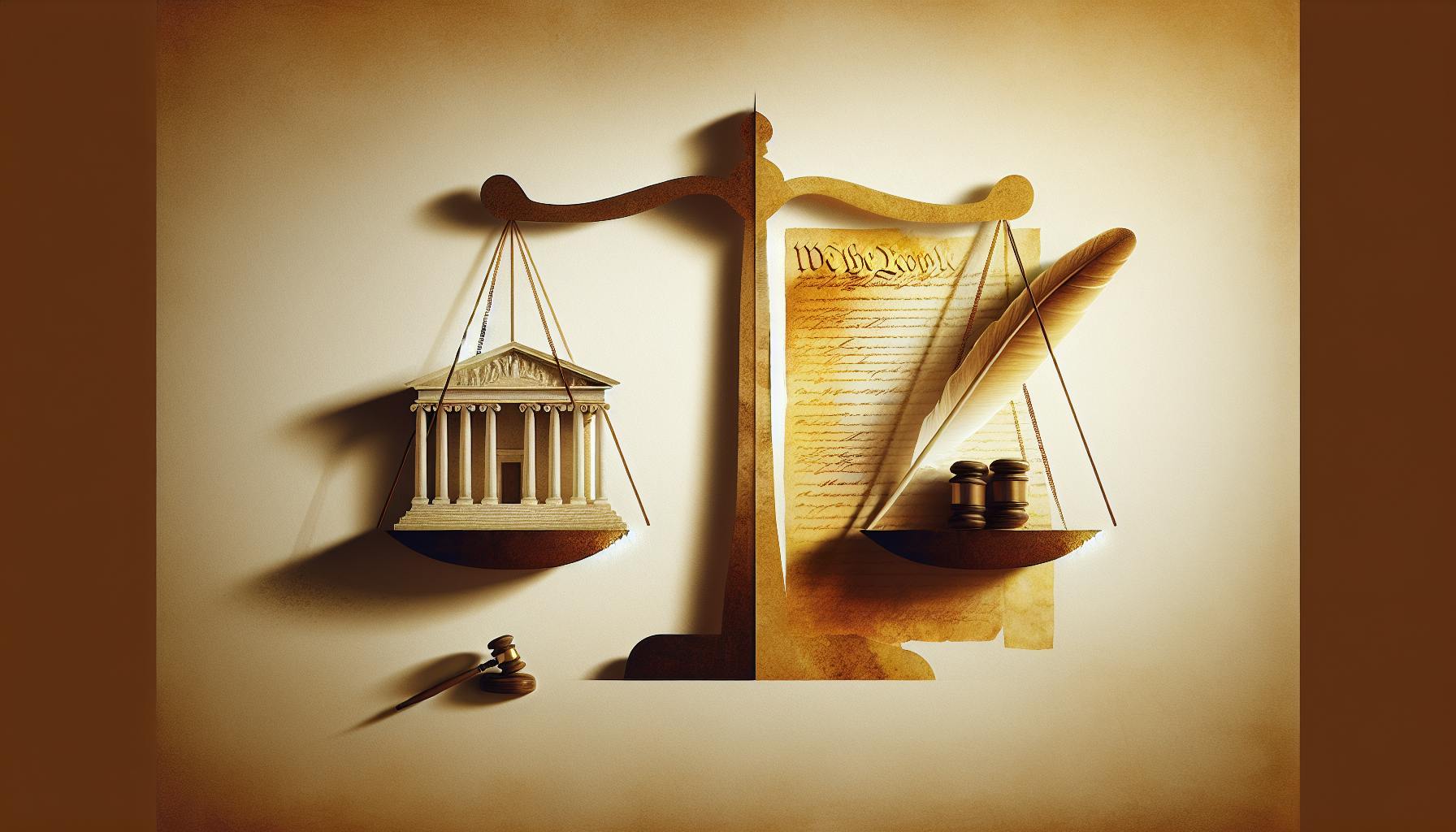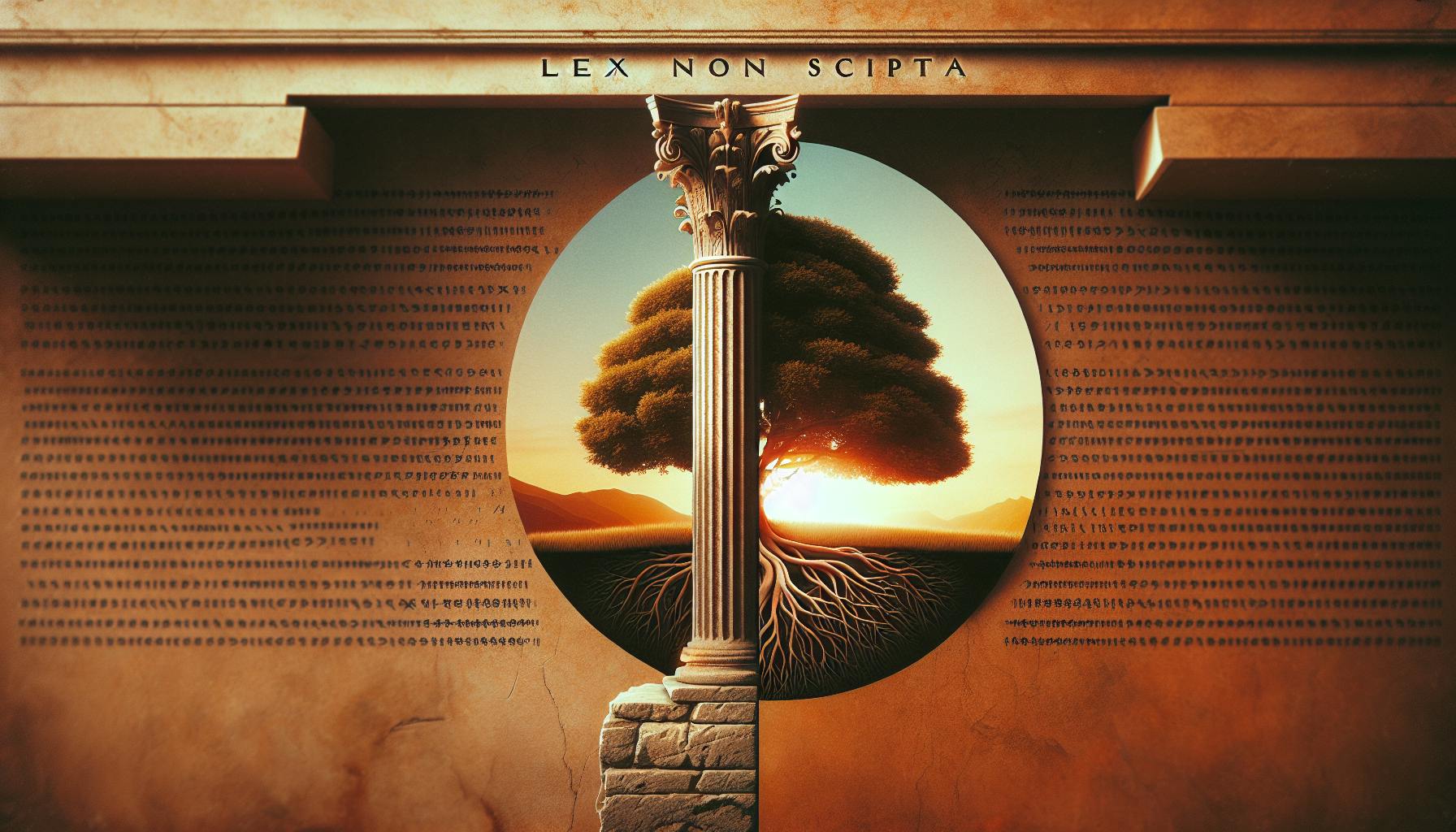We can all agree that organized crime and racketeering undermine civil society.
This article will explain the key provisions of the Racketeer Influenced and Corrupt Organizations (RICO) Act, a pivotal anti-racketeering law, in simple terms.
You'll learn the historical context behind RICO's passage, its main goals and objectives, key definitions of racketeering activity, the stringent penalties it enacted, and how the law has been applied in high-profile federal cases.
Introduction to the Racketeer Influenced and Corrupt Organizations Act
The Racketeer Influenced and Corrupt Organizations Act (RICO) is a United States federal law aimed at combatting organized crime. Enacted in 1970 as part of the Organized Crime Control Act, RICO has become an important tool for federal prosecution of corruption and criminal organizations.
Understanding RICO and Its Role in American Criminal Law
RICO is codified under Title 18, Chapter 96 of the United States Code. It provides extended penalties for acts performed as part of an ongoing criminal organization. RICO focuses specifically on racketeering activities like extortion, money laundering, and fraud.
RICO allows for the leaders of a criminal organization to be tried for the crimes they ordered others to do. It also provides for forfeiture of assets obtained from racketeering activity. RICO statutes assist U.S. Attorneys in dismantling organized crime through expanded criminal and civil lawsuits.
Historical Context: RICO's Enactment in the Organized Crime Control Act of 1970
The Organized Crime Control Act of 1970 was signed into law by President Nixon with the intention of destroying organized crime, which had grown in power through diverse criminal activities. RICO was included to attack the source of money and power for these criminal organizations.
The statement of findings in the Act declared that "organized crime in the United States" had become highly sophisticated, diversified, and widespread. It stated that organized crime derived power through money obtained from "substantial" economic activities, and then used this money to infiltrate legitimate businesses.
The Goals and Objectives of RICO Legislation
The main objective of RICO was to impose harsh penalties to deter organized criminal activity. RICO empowered law enforcement to prosecute the leaders of criminal organizations for crimes they ordered others to commit.
Other goals included providing compensation for victims, eliminating infiltration of legitimate businesses by criminal groups, and reforming organization leadership by imprisoning the most culpable members.
Overall, RICO remains an important tool for prosecuting organized criminal activity at both the federal and state level within the United States criminal justice system.
What is the RICO Act in simple terms?
The Racketeer Influenced and Corrupt Organizations (RICO) Act is a federal law passed in 1970 that provides extended penalties for criminal acts performed as part of an ongoing criminal organization or "racketeering."
In simple terms, the RICO Act:
- Makes it illegal to acquire or operate an enterprise through a pattern of criminal activity
- Allows prosecutors to charge leaders of a criminal organization for crimes committed by their subordinates
- Imposes long prison sentences and large fines on RICO offenders
- Allows victims to sue offenders for triple damages in civil court
The RICO Act was designed to combat organized crime operations like the mafia. It gives law enforcement more tools to disrupt and dismantle criminal organizations by targeting their leadership and finances.
A criminal violation of RICO requires prosecutors to prove a "pattern of racketeering activity" connected to an "enterprise." An enterprise can be a legal entity like a business or non-profit, or an association of individuals working towards a shared criminal purpose.
The RICO Act has been used in cases involving murder, kidnapping, bribery, embezzlement, drug trafficking, money laundering, counterfeiting, and other serious crimes. High-profile RICO cases have targeted mob families, motorcycle gangs, street gangs, corrupt public officials, and white collar criminals.
What is the Racketeer Influence Corrupt organization Act?
The Racketeer Influenced and Corrupt Organizations Act (RICO) is a United States federal law that provides for extended penalties for criminal acts performed as part of an ongoing criminal organization. RICO was enacted by section 901(a) of the Organized Crime Control Act of 1970.
RICO allows the government to prosecute an individual or group that has committed certain crimes ("predicate offenses") as part of an ongoing criminal enterprise. To convict under RICO, the government must prove that the defendant engaged in a "pattern of racketeering activity" and invested income from that activity in an "enterprise".
The law allows for severe criminal penalties and civil action against individuals or organizations engaged in these ongoing criminal enterprises. A person or organization found guilty under RICO can face up to 20 years in prison per racketeering count, forfeiture of business interests, and paying victims damages up to three times the amount of the damages caused.
RICO also allows private individuals who have been injured by violations of the Act to sue the offender in federal court and collect treble damages. So if a criminal RICO case results in a conviction, that finding would estop the defendant from denying the allegations if a private plaintiff brought a civil RICO suit against them.
In summary, RICO provides an effective legal means to prosecute members of organized criminal enterprises for the crimes they commit in furtherance of their organizations. The law has been used to prosecute crimes committed by organized crime groups, corrupt organizations, and even terrorist organizations.
What is an example of a RICO charge?
Some common examples of offenses that can lead to RICO charges include:
- Bribery of public officials or witnesses to influence their actions or testimony
- Extortion through threats of violence or other coercion to obtain money or property
- Theft from interstate shipments, such as hijacking trucks transporting goods across state lines
- Embezzlement of funds from a business, union, or other organization
- Transporting stolen property across state lines
Other predicate acts that may support a RICO charge include murder, kidnapping, arson, drug trafficking, money laundering, counterfeiting, and mail/wire fraud conspiracies.
For a RICO charge, there must be evidence showing a pattern of at least two predicate criminal acts committed over a 10-year period by members of the same criminal organization. So an individual act of bribery or extortion may not be enough. Prosecutors would need to establish an ongoing pattern of related corrupt activities tied to an organized criminal enterprise.
What are the 3 types of racketeering?
The Racketeer Influenced and Corrupt Organizations (RICO) Act outlines three major types of racketeering activities:
Drug Trafficking
Trafficking controlled substances like cocaine, heroin, methamphetamines, and marijuana. This includes the cultivation, manufacturing, distribution, and sale of illegal drugs. Offenders can face charges under RICO and the Controlled Substances Act.
Money Laundering
Concealing the origins and ownership of money obtained from illegal activities by funneling it through legitimate businesses. Common techniques include smurfing, structuring, and integrating dirty money into the revenues of cash-intensive businesses like restaurants, parking garages, strip clubs, casinos, etc.
Embezzlement
When a person misappropriates money or funds entrusted to them through their job or position of power. This includes outright theft as well as more complex schemes like invoice manipulation, payroll fraud, and expense reimbursement fraud. Public corruption and abuse of public office for private gain is a major focus of RICO embezzlement cases.
sbb-itb-e93bf99
Key Provisions and Definitions within RICO
RICO's Legal Definitions: Racketeering Activity and Enterprise
The Racketeer Influenced and Corrupt Organizations (RICO) Act provides legal definitions of key terms used in the statute.
"Racketeering activity" refers to a range of federal and state crimes, including extortion, money laundering, fraud, and murder-for-hire. To violate RICO, a defendant must engage in a "pattern" of racketeering activity, meaning at least two racketeering acts within 10 years.
An "enterprise" under RICO can be any individual, partnership, corporation, association, or group of individuals associated in fact, although not a legal entity. This broad definition allows RICO to address criminal organizations like the mafia, as well as legitimate businesses infiltrated by criminal elements.
Identifying Prohibited Activities: From Extortion to Murder-for-Hire
RICO prohibits a wide spectrum of criminal behaviors that fall under the definition of "racketeering activity." This includes, but is not limited to:
- Extortion
- Money laundering
- Fraud
- Embezzlement
- Bribery
- Counterfeiting
- Theft
- Arson
- Kidnapping
- Gambling
- Murder-for-hire
- Drug trafficking
RICO also incorporates violations of over 100 federal statutes, including mail and wire fraud, obstruction of justice laws, immigration violations, and copyright infringement.
RICO's Reach: Confronting a Spectrum of Criminal Conduct
While initially aimed at organized crime syndicates, RICO confronts various forms of criminal conduct involving an "enterprise." This includes traditional mob activities like loan sharking, illegal gambling, and murder-for-hire schemes.
However, RICO also applies to white-collar crimes like securities fraud, embezzlement, money laundering, and political corruption. High-level corporate executives and government officials have faced RICO charges for racketeering activity through otherwise legitimate organizations.
So RICO's scope encompasses a spectrum ranging from violent organized crime to complex economic crimes committed through corporations.
Stringent Penalties and Enforcement Measures
Defendants convicted under RICO face severe criminal penalties, including up to 20 years in prison per racketeering count and life imprisonment for capital offenses. RICO also authorizes the forfeiture of assets associated with the criminal enterprise.
In addition, RICO provides for civil lawsuits against racketeering organizations and individuals that have damaged a plaintiff's business or property. Successful RICO plaintiffs can recover treble (triple) damages plus legal costs.
The U.S. Attorney and Department of Justice play a lead role in enforcing RICO through federal prosecutions. They maintain specialized units to combat organized crime, white-collar offenses, and public corruption.
Civil Litigation: Pursuing Civil Suits Under RICO
This section outlines the civil remedies available under RICO, which allow individuals and the government to file lawsuits in federal court against violators and potentially recover treble damages.
Private Causes of Action: Seeking Treble Damages Through Civil Suit
Private parties can pursue civil RICO suits to recover damages caused by violations of the statute. To bring a civil RICO claim, a plaintiff must prove that the defendant violated the RICO statute and that this violation directly injured the plaintiff's business or property. If successful, civil RICO allows plaintiffs to recover treble damages (three times the amount of actual damages).
Civil RICO claims require proving similar elements to criminal RICO charges, including proving the existence of an enterprise engaged in a pattern of racketeering activity. However, the burden of proof is lower in civil cases. While criminal RICO cases require proof beyond a reasonable doubt, civil RICO cases use the "preponderance of evidence" standard.
A civil RICO lawsuit begins by filing a complaint in federal district court. The complaint must state the specific RICO violations alleged, such as acts of fraud, extortion, or money laundering. The plaintiff must also clearly articulate how they suffered financial harm from these violations. Defendants then have 20 days to respond to the complaint. Like other federal civil cases, RICO suits involve motions, discovery, settlement conferences and ultimately a trial if not settled beforehand.
Government-Led Civil Suits and Injunctive Relief
In addition to criminal prosecution, the U.S. Department of Justice can pursue civil remedies under RICO to obtain court orders that halt ongoing racketeering activities. These civil suits aim to obtain injunctive relief in the form of restraining orders, prohibition of certain conduct, dissolving certain organizations, and other court-ordered remedies.
The government must prove the likelihood of prevailing on the merits of showing a RICO violation and that injunctive relief is necessary to prevent immediate harm. Courts balance equities in deciding whether to grant injunctive relief. The relief aims to stop illegal conduct from continuing, while avoiding overly burdensome remedies on defendants before they are found liable.
Injunctive relief under civil RICO could involve seizing assets, removing a defendant from control of an organization, stopping associating with certain persons, or prohibiting certain conduct. Violating the court's injunctive orders can result in criminal contempt charges. Civil RICO injunctions supplement criminal charges, allowing prosecutors to dismantle criminal organizations.
RICO's Application in Federal Court: Notable Cases and Expansive Use
From Mafia to Markets: RICO's Use Against Organized Crime and Beyond
The Racketeer Influenced and Corrupt Organizations (RICO) Act was originally intended to combat organized crime syndicates like the Mafia. However, its application has expanded significantly beyond traditional organized crime.
By the 1990s, RICO was being used to prosecute insider trading on Wall Street. High-profile cases like the prosecution of Michael Milken showed that RICO could be effective against white-collar crimes involving securities fraud. More recently, RICO has been used against street gangs, political protest groups, and even against organizations accused of distributing obscene content.
Some key statistics on RICO's expanded application:
-
As of 2008, only 9% of civil RICO cases filed in federal court targeted traditional organized crime groups. The majority targeted legitimate businesses and organizations.
-
A 2002 report by the ABA found that only 6% of criminal RICO cases filed by U.S. Attorneys targeted traditional organized crime.
So while initially conceived as a tool against the Mafia, RICO has steadily grown into a broad weapon against many forms of enterprise criminality - from drug trafficking to insider trading on Wall Street.
High-Profile RICO Cases: Convictions and Legal Precedents
Some high-profile RICO cases have resulted in major convictions of public officials and helped shape key legal precedents around RICO:
U.S. v. Anthony Salerno (Mafia Commission Trial, 1986): This landmark RICO case against the heads of New York's "Five Families" resulted in convictions of eight mob bosses. It established RICO as an effective tool against organized crime.
U.S. v. Michael Milken (1989): The "Junk Bond King" of Wall Street was charged under RICO and accused of insider trading and securities fraud. He reached a plea deal with prosecutors but set a precedent for using RICO in white-collar cases.
U.S. v. Key West Police Department (1984): In this first-ever RICO case against a local police force, top Key West police officials were convicted of running protection rackets. It showed RICO could target public corruption.
These and other major RICO cases have resulted in lengthy prison terms for offenders and expanded RICO's legal scope. RICO gives prosecutors more flexibility to target criminal enterprises as opposed to individuals.
Interpreting RICO: Key Court Decisions and Legal Analysis
This section provides an overview of major US Supreme Court decisions that have interpreted the Racketeer Influenced and Corrupt Organizations (RICO) Act, establishing key judicial precedents.
Landmark RICO Cases: US Supreme Court Interpretations
The US Supreme Court has issued several landmark decisions interpreting various provisions of RICO:
-
In Sedima, S.P.R.L. v. Imrex Co. (1985), the Court established that RICO applies to both legitimate enterprises and criminal organizations, and that a prior criminal conviction is not required to bring a civil RICO claim.
-
In H.J. Inc. v. Northwestern Bell Telephone Co. (1989), the Court defined what constitutes a "pattern of racketeering activity" under RICO. A pattern requires at least two racketeering acts within 10 years that show relatedness and continuity.
-
In Reves v. Ernst & Young (1993), the Court held that to be liable under RICO, a defendant must have participated in the operation or management of the criminal enterprise itself.
-
In Scheidler v. National Organization for Women, Inc. (2003), the Court ruled that RICO requires an economic motive for racketeering acts, beyond just interfering with commerce through those acts.
These decisions have shaped how RICO is applied in both criminal prosecutions and civil lawsuits. They demonstrate how RICO's broad language has required ongoing judicial interpretation.
RICO's Evolving Jurisprudence and the Public Integrity Section
Over time, RICO jurisprudence has evolved as federal prosecutors and courts have applied the law to new types of cases. A key force in this evolution has been the Public Integrity Section (PIN) of the Department of Justice's Criminal Division.
The PIN has specialized expertise in prosecuting corruption by public officials and law enforcement officers. It has spearheaded high-profile RICO cases against state and local officials, expanding RICO's role in fighting systemic public corruption.
For example, Operation Greylord in the 1980s involved undercover operations and RICO charges against judges and lawyers in Chicago. More recently, the PIN has pursued RICO cases related to police misconduct.
So while RICO was originally aimed at organized crime, its flexibility has enabled its use against public corruption. The PIN's efforts have been instrumental in this jurisprudential shift. However, RICO's application to public integrity issues remains complex and controversial.
Conclusion: The Lasting Impact of RICO on American Jurisprudence
Reflecting on RICO: Its Influence and Future Directions
The Racketeer Influenced and Corrupt Organizations (RICO) Act has had a significant influence on criminal law and procedure in the United States since its enactment in 1970. RICO was designed to combat organized crime by providing enhanced penalties, forfeiture provisions, and civil causes of action to prosecute racketeering activities performed as part of an ongoing criminal enterprise.
Over the past five decades, RICO has proven to be a versatile and effective tool for federal prosecutors. It has been used to dismantle major criminal organizations and successfully prosecute high-profile cases involving corruption, fraud, drug trafficking, terrorism, and other serious crimes. RICO charges allow prosecutors to tie together diverse criminal acts committed over long periods of time by multiple defendants into a single, overarching conspiracy prosecution.
While initially aimed at mob bosses and kingpins, RICO has also been effectively applied in cases involving white collar and corporate crime. The prospect of lengthy prison terms, asset forfeiture, costly damages in civil suits, and harm to reputation has served as a major deterrent. RICO has aided in curbing activities such as securities fraud, money laundering, insurance fraud, political corruption, and commercial bribery.
As RICO continues to evolve in federal case law, there is some debate around the appropriate scope and application of the statute. Issues around overly broad interpretation, exploitation for purposes beyond the original intent, and due process concerns have emerged. However, RICO remains an integral part of the legal framework for prosecuting organized and complex criminal activities. It will likely continue to serve as a centerpiece of U.S. efforts to fight serious crime involving multiple actors and entities across jurisdictional boundaries.


